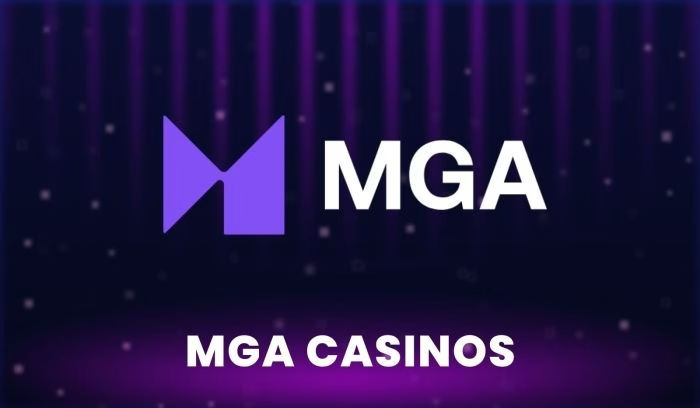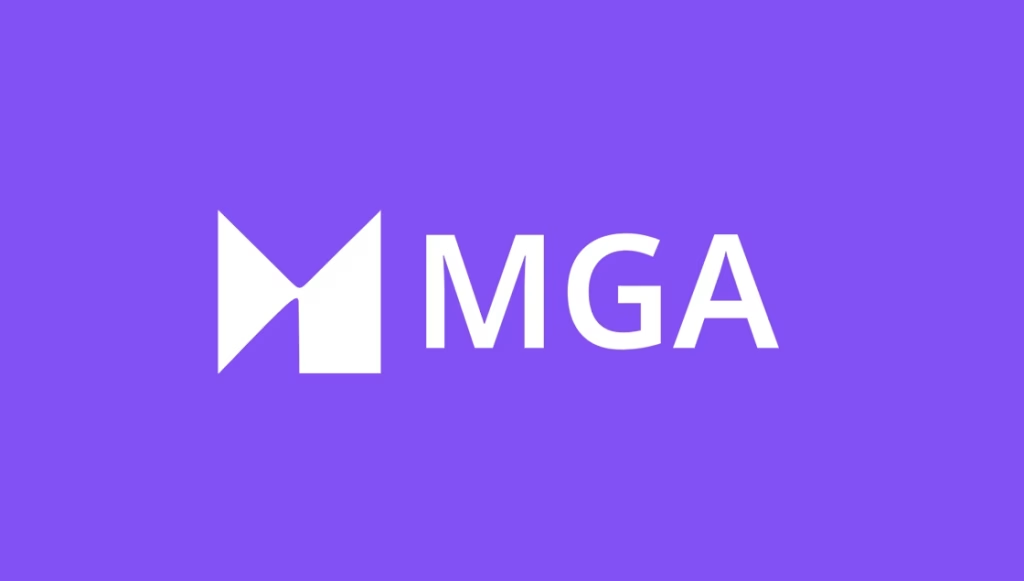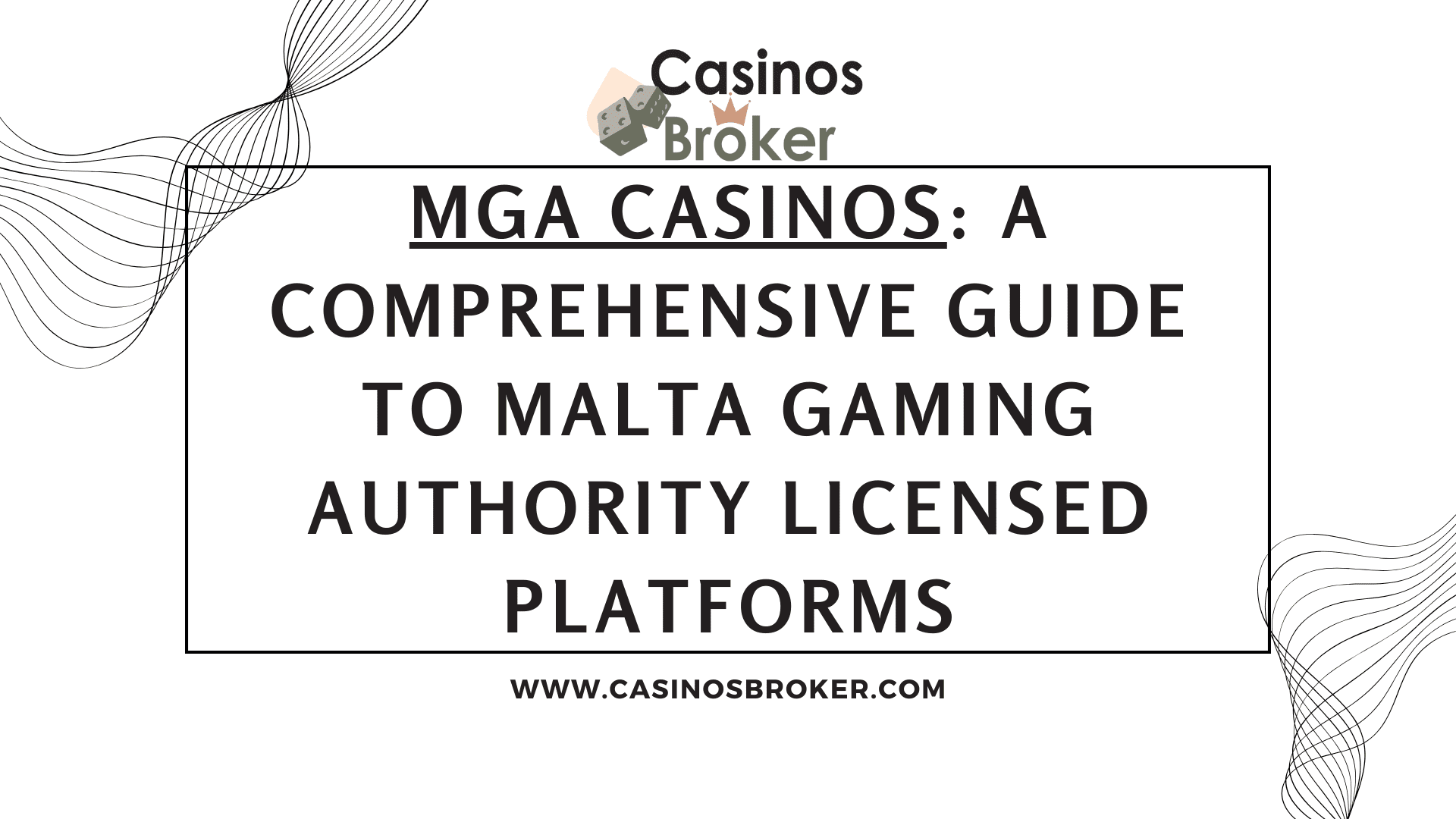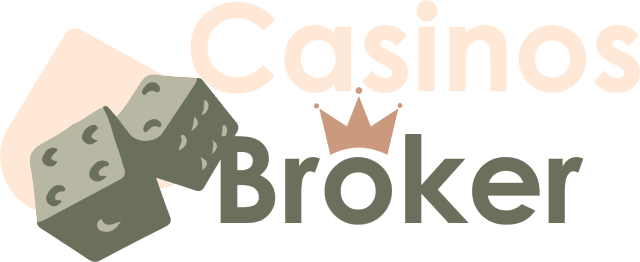Introduction – MGA Casinos
The Malta Gaming Authority (MGA) has been a foundational pillar of the online gambling ecosystem for more than two decades. It combines rigorous compliance expectations, credible technical oversight, and a pragmatic, business-aware posture that has made Malta an operational hub for many of the sector’s most recognizable brands. For consumers, the MGA logo signals safer play, clear terms, and accountable operators.
For management teams, it opens doors to payment providers, content partners, and talent. For investors, it is often the first filter in a diligence process, indicating that a company can design, staff, and operate within an established regulatory framework.
This guide translates the MGA regime into commercial and operational realities, corrects common misconceptions, and lays out what a high-quality MGA-licensed operation looks like in practice—so management teams can build it, and investors can price it with confidence.
 A short history and what has changed since 2018
A short history and what has changed since 2018
Malta’s regulator began life as the Lotteries and Gaming Authority in 2001, making it one of the earliest movers in remote gambling oversight. In 2015 it rebranded to the Malta Gaming Authority and, over time, focused more directly on online verticals, reflecting demand and the growth trajectory of the industry. The most important structural change came in 2018, when the MGA replaced the legacy Class 1–4 license framework with a cleaner, more scalable model:
- B2C Gaming Service License for operators offering games directly to players.
- B2B Critical Gaming Supply License for suppliers providing platforms, game systems, or other critical components used by B2C licensees.
The MGA retained the concept of “game types” (such as casino RNG and live, fixed-odds betting, or peer-to-peer games) for reporting, compliance, and fee banding. But game types are no longer separate license classes; they are attributes of the services offered.
This may seem like a technical distinction, but it matters for capital planning and consolidation. Multi-vertical businesses no longer juggle multiple classes, and acquirers can integrate new verticals under one authorization, provided Key Functions and technical scope are approved.
What the license really buys you—and what it does not
An MGA license is a trust signal. Consumers are more likely to deposit with brands that carry it, payment processors and banks are more willing to support those brands, and B2B partners in aggregation and content treat the license as table stakes. But an MGA authorization is not a universal passport.
Nationally regulated markets such as the UK, Spain, Sweden, the Netherlands, certain German states, and many North American jurisdictions require their own domestic approvals. MGA-licensed operators can compete in dot-com territories where local laws permit or tolerate cross-border supply, but sustainable, scaled growth typically depends on transitioning revenue into locally regulated markets over time.
Strategically, that means management should use the MGA casinos license as a platform to prove operational quality and unit economics, then allocate capital toward white-market entries where lifetime value is more defensible. For investors, the license is a starting point; valuation hinges on revenue mix by jurisdiction, the strength of payments coverage, and demonstrated ability to navigate local licensing.
The path to licensure: process, documentation, and timelines
The MGA’s licensing process is structured and predictable when managed well. It typically includes:
Corporate probity and fit-and-proper checks. The Authority reviews the integrity and competence of ultimate beneficial owners, directors, and senior management. This extends to criminality, insolvency, and tax status checks, along with source-of-funds for capitalization. In a change-of-control transaction, expect reassessment of the incoming shareholders and directors.
Business and financial review. Applicants submit a detailed business plan covering products and game types, markets of operation, risk and compliance frameworks, organizational charts, vendor and platform relationships, and financial projections. Solvency and liquidity expectations are not box-ticking exercises; applicants must evidence funding appropriate to their scale and risk profile.
Technical and systems assessment. Before go-live, operators undergo a system review to ensure platforms, wallets, RNGs, game integrations, and data flows meet technical standards and reporting requirements. A post-launch compliance audit typically follows within a defined window (operators often plan within the first year), after which audits are risk-based and periodic. For acquisition planning, map these audits to the integration calendar—merging platforms can trigger new review points.
Appointment of Key Function holders. The MGA expects specific Key Function roles to be filled by competent, approved individuals, including compliance oversight, MLRO/AML function, information security, internal audit, and player support. Continuity of these functions is critical: unsuccessful or slow approvals for replacements can become the bottleneck in both licensing and change-of-control scenarios.
Ongoing reporting and incident management. The regulator requires regular submissions on GGR by game type and market, player funds segregation, suspicious transaction reporting (through the FIU), and prompt notification of material incidents such as security breaches or systemic game errors. In practical terms: build reporting and incident response as core disciplines, not ad hoc tasks.
Fees, compliance contribution, and the impact on margins
The financial obligations associated with an MGA authorization comprise a blend of fixed and variable elements. A B2C license carries an annual fixed fee, widely referenced at approximately €25,000 for the core authorization, alongside an application processing fee at the outset. More materially, licensees pay a compliance contribution that scales with GGR, with different tiers and caps depending on the game type (for example, RNG casino, live casino, fixed-odds betting, or peer-to-peer). The schedule is updated periodically, and changes can be non-trivial for multi-vertical businesses that shift mix or grow into higher contribution bands.
 B2B Critical Gaming Supply licensees face a different fee structure and, in general, are not taxed on GGR. For investors, this distinction matters: owning B2B assets offers diversified revenue and cross-market portability without exposure to gaming taxes, while B2C assets deliver higher gross margins but carry tax and contribution variability.
B2B Critical Gaming Supply licensees face a different fee structure and, in general, are not taxed on GGR. For investors, this distinction matters: owning B2B assets offers diversified revenue and cross-market portability without exposure to gaming taxes, while B2C assets deliver higher gross margins but carry tax and contribution variability.
From a deal-modeling standpoint, management should ensure the latest fee schedules are reflected in forecasts and run sensitivities to assess EBITDA impact from plausible regulatory changes. Buyers should also test whether the target has accrued for any underpayments and whether there are open queries with the regulator that could crystallize as liabilities post-close.
Player protection: beyond tools to outcomes
Responsible gambling (RG) is no longer a compliance annex; it is a core business risk. The MGA has formalized player protection expectations through directives that require operators to offer and honor practical tools—deposit, loss, wager, and time limits; cooling-off periods; self-exclusion; and account closure—as well as to implement policies that prevent circumvention (such as reopening accounts too quickly or cross-targeting excluded players with marketing).
Where the bar continues to rise is in data-led monitoring and interventions. The Authority expects operators to identify behavioral markers of harm—accelerating deposit frequency, loss-chasing, increased session intensity, payment declines—and to intervene proportionately. That means soft messaging when patterns emerge, live agent outreach for escalations, and account restrictions or timeouts when risk persists. The intent is to drive outcomes: fewer instances of aggravated harm, well-documented intervention trails, and continuous improvement based on case reviews.
Operationally, this requires data engineering to capture the right signals, tooling to triage cases, trained agents to manage sensitive conversations, and a QA and audit program to evidence effectiveness. Investors should ask for cohort-level outcomes: limit adoption rates, intervention-to-harm ratios, closure and reactivation controls, and third-party audits. Weakness here is a leading indicator of regulatory sanctions and brand erosion.
AML/CTF: alignment with EU standards and an active enforcement posture
Malta’s AML framework has strengthened materially in recent years, supported by broader national reforms and heightened supervisory scrutiny. The MGA aligns with EU directives, and licensees must establish risk-based KYC programs, conduct enhanced due diligence for higher-risk players, monitor transactions for red flags, and file suspicious transaction reports with Malta’s Financial Intelligence Analysis Unit (FIAU). The MLRO role is a designated Key Function and must be resourced with authority and independence.
Crypto acceptance sits at the intersection of AML and innovation. The MGA casinos previously operated a sandbox for distributed ledger applications; today, the Authority expects any virtual asset acceptance to be tightly controlled, supported by licensed VFA or crypto-asset service providers, and compliant with Travel Rule obligations and FIU guidance. In practice, only a subset of operators accept crypto, and even then with conservative limits and stringent monitoring. Buyers should not assume crypto contributes materially to GGR without explicit evidence of approved arrangements and end-to-end controls.
Game fairness, certification, and change management
Trust in game outcomes remains non-negotiable. MGA-licensed operators are required to deploy content certified by approved testing laboratories. Certification covers RNG quality, math verification, and return-to-player (RTP) parameters; published RTPs must match production behavior. Operators need robust change management: version control, regression testing when content or wallet logic changes, and documented approvals. The MGA’s systems audits routinely test these controls.
A practical diligence step is to sample certification reports and map them to production catalogs. Any disconnects—uncertified titles, expired certificates, or untracked parameter changes—should be treated as red flags requiring remediation, because they signal broader control weaknesses.
Payments, PSP strategy, and working capital realities
One of the practical strengths of MGA casinos is their ability to access a diversified PSP stack. Cards, bank transfers, and instant banking options such as Trustly or similar providers have broad coverage; e-wallets like Skrill and Neteller remain significant in certain geographies; prepaid solutions serve lower-ticket cohorts. Behind the scenes, the acceptance and uptime picture depends on corridor-by-corridor risk appetite among acquirers and processors. Operators with diversified routing, smart retry logic, and well-managed chargeback processes typically enjoy higher approval rates and lower fraud losses.
Two areas deserve explicit attention. First, bonus abuse and fraud prevention: operators need device fingerprinting, velocity checks, and link analysis to police multi-accounting and exploitative behavior that can otherwise dilute bonus ROI and inflate chargebacks. Second, cash management: settlement cycles across PSPs, rolling reserves, and the timing of compliance contributions and taxes can create working capital swings.
In M&A, probe the PSP mix, withdrawal SLAs, chargeback rates, and reserves to quantify the operational cash profile, and test the resilience of the stack under stress (for example, if a key acquirer derisks a region).
 MGA Casinos – Bonuses and promotions: commercial upside within transparent rules
MGA Casinos – Bonuses and promotions: commercial upside within transparent rules
MGA licensees can offer competitive promotions—welcome packages, deposit matches, free spins, loyalty tiers, and cashback—so long as terms are fair, transparent, and easily accessible. Increasingly, regulators penalize misleading claims (for instance, “free” that is not free), hidden wagering multipliers, or withdrawal frictions such as sudden KYC hurdles applied selectively at cash-out. The cleanest programs spell out wagering requirements, eligible games, time limits, and cap mechanics up front and do not use predatory terms to claw back legitimate winnings.
From a P&L perspective, bonus cost should be recognized appropriately, and liabilities accrued for earned but unredeemed promotional value. Investors should review bonus cohorts by acquisition source, LTV/CAC by geography, and the operator’s policy for adjusting terms in response to abuse or RG considerations. A high-quality operator can show how promotions translate to sustainable net gaming revenue without excessive churn or compliance risk.
How MGA Casinos compares to other regimes
The MGA sits in a pragmatic middle ground: more rigorous and credible than historically lighter-touch offshore alternatives, but more commercially flexible than some national regulators. The UK Gambling Commission (UKGC), for instance, has moved toward more stringent affordability checks and tighter marketing rules, backed by significant enforcement powers and fines. Gibraltar maintains high standards but licenses a smaller cohort of operators and has a narrower ecosystem.
Curaçao is undergoing a substantial reform process replacing the old master–sub-license system with a direct licensing regime that raises the compliance bar; however, implementation timelines and supervisory capacity remain in flux.
The practical implication is that an MGA license can anchor a cross-border dot-com strategy, reduce friction with reputable PSPs, and provide a platform to professionalize operations. But for scale in closed markets, operators must add local licenses and adapt product, KYC, and promotions accordingly. Buyers should value MGA-licensed assets based on the mix of white versus gray markets and the credibility of the roadmap into national regimes.
Filing complaints and dispute resolution
For players, the MGA’s Player Support Unit (PSU) provides a structured channel to raise complaints relating to MGA-licensed operators. The process typically requires the player to first exhaust the operator’s internal complaints procedure; if unresolved, the player submits details through the MGA’s online portal, including operator name, account identifiers, correspondence, and a description of the dispute.
The Authority mediates compliance and fairness issues but does not compensate fair game losses or act as a court of law. For operators, the existence of a responsive PSU is a quality signal—competent teams resolve issues promptly and maintain clean complaint ratios; poorly managed complaints can escalate to supervisory findings.
Legal environment and cross-border claims
One of the more consequential legal developments has been Malta’s 2023 amendment to its Gaming Act, widely referred to as “Bill 55.” The amendment aims to protect MGA licensees from certain foreign civil actions related to the provision of gaming services that are lawful under Maltese law. The move has drawn scrutiny and debate, particularly in the context of claims brought in some EU countries over historical losses in gray-market operations. The situation is dynamic and subject to ongoing legal dialogue at EU level. From an M&A standpoint, teams should not assume blanket immunity; instead, they should conduct a country-by-country assessment of legal exposure, monitor test cases, and structure warranties, indemnities, and escrow to address residual risks.
Technology, data protection, and security posture
Beyond gaming-specific controls, MGA-licensed operators must meet expectations around information security and data protection, consistent with EU standards. Information security oversight is a Key Function; cloud hosting, encryption, key management, and access controls are recurring audit topics.
GDPR compliance is a separate but related domain: data minimization, lawful processing, and incident response (including breach notification timelines) must be operational realities. In integration planning, acquirers should map data flows across brands and platforms to ensure that the consolidated architecture maintains compliance and that any migration triggers required notifications or DPIAs.
 What high-quality looks like in practice
What high-quality looks like in practice
Bringing these threads together, a well-run MGA-licensed operator tends to exhibit a few consistent traits. First, governance is real: the board engages directly on AML, RG, and cyber risk; Key Function holders have stature and independence; and internal audit has teeth.
Second, the operating model is data-driven: marketing is measured to LTV/CAC with bonus liability controls; RG interventions are tracked and quality-assured; and PSP routing is managed dynamically to sustain approval rates and margin.
Third, technology is controlled and documented: releases are governed, game catalogues are certified and current, and incident learning loops are closed quickly. Finally, the strategy is honest about market exposure: management can articulate the share of GGR from white, gray, and black markets, the regulatory pipeline to reweight toward white markets, and the expected unit economics after local licensing.
For investors, due diligence should be calibrated to verify these traits rather than accept them at face value. That means file checks on AML and RG cases, sampling of certification and audit reports, re-performance of regulatory reporting, and reconciliation of PSP settlements to ledger cash.
Where gaps are found, the question is not simply whether they exist but whether management has identified them, planned remediation, and executed on commitments. Cultural tone at the top is a reliable predictor of whether improvements will stick.
Practical steps for executives planning licensing or M&A
If you are preparing to apply for an MGA casinos license, build timelines around Key Function recruitment and system audit readiness. The biggest delays often come from underestimating the time needed to vet and onboard Key Function holders or to harden platform controls before the pre-launch review. Work backwards from your intended go-live date with a realistic buffer.
If you are pursuing an acquisition, engage the MGA early on change-in-control notices and map any mandatory re-approvals for Key Functions. Update your integration plan to accommodate audit cycles—major platform changes or migrations can trigger supplemental reviews. Stand up transition service agreements (TSAs) where necessary to maintain compliant operations during the handover.
If you are an incumbent MGA operator aiming to optimize valuation, reduce reliance on a single acquirer or PSP, and invest in demonstrably effective RG and AML controls. Document your control improvements and outcomes; prospective buyers will pay for evidence, not promises. Consider augmenting your B2C footprint with B2B supply (content or aggregation) where it aligns with your capabilities, as these revenues can diversify cash flows and carry lighter direct regulatory cost burdens.
Conclusion: what the MGA seal should mean to you
For players, the MGA logo on a casino site signifies that games have been certified by recognized labs, that funds are handled securely, and that there is a route to escalate complaints to an independent authority. For operators, it unlocks partnerships and payments, codifies governance expectations, and forces a level of organizational maturity that is now the price of entry into credible iGaming. For investors and buyers, it provides a common language to interrogate the quality of an asset—how it manages risk, how it earns revenue, and how it plans to grow compliantly.
The MGA’s framework is not static. Player protection is becoming more data-led, AML standards continue to rise, and the legal environment around cross-border claims is evolving. Meanwhile, comparable regulators are shifting: Curaçao is tightening, the UK is pushing deeper on affordability and marketing, and EU member states continue to refine national regimes. The common thread is that quality operations—where governance, controls, and commercial discipline reinforce each other—retain strategic flexibility and command premium valuations.
MGA-licensed casinos are not just “safe and reliable.” At their best, they are structured to operate fairly at scale, to treat customers responsibly, and to withstand regulatory scrutiny while delivering sustainable growth. If you are building one, lead with governance and data.
If you are buying one, test for substance behind the seal. And if you are playing on one, use the trust signal as intended: verify the license in the site footer, read the promotional terms, and know that there is an independent authority watching the shop.





